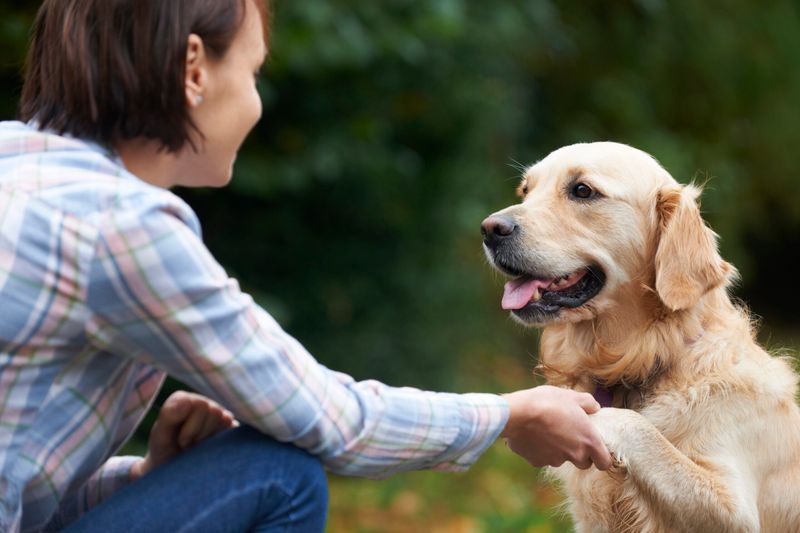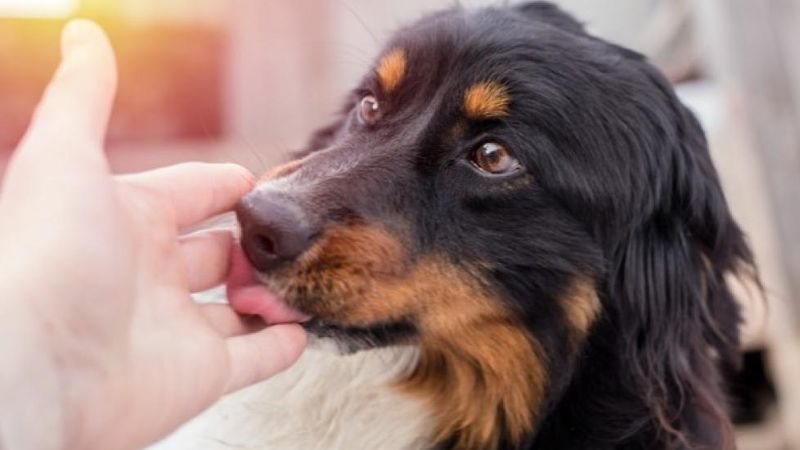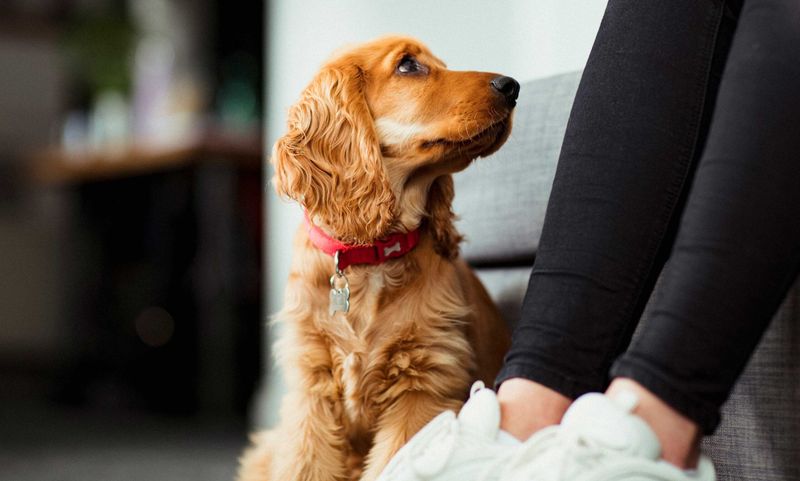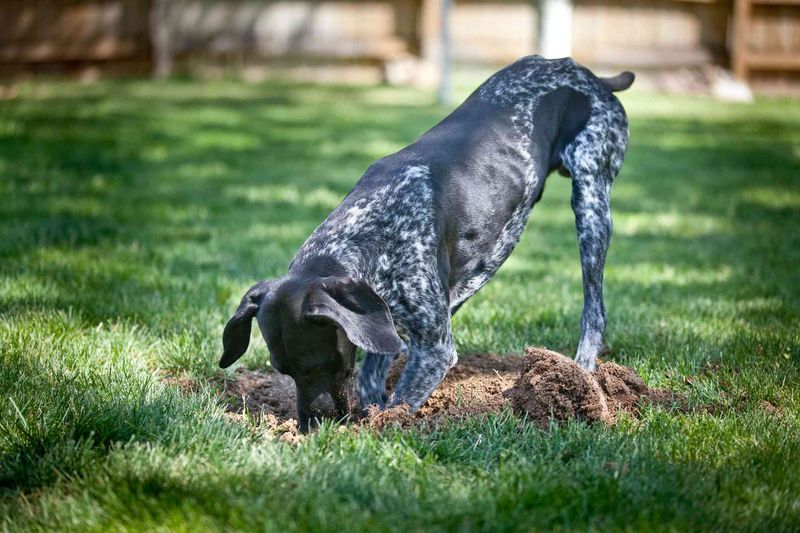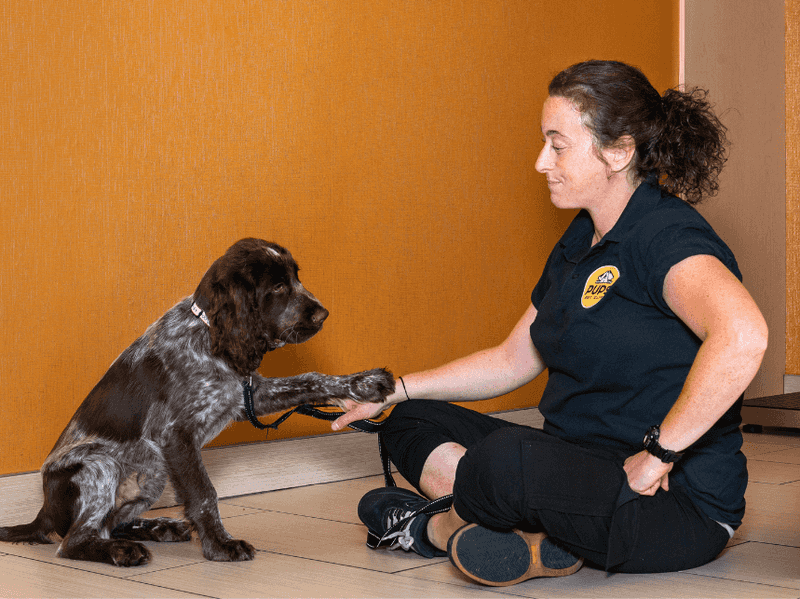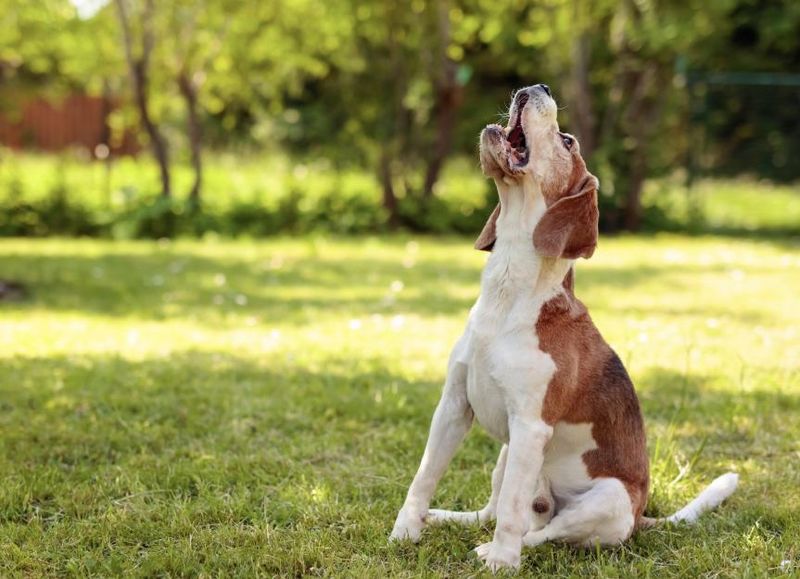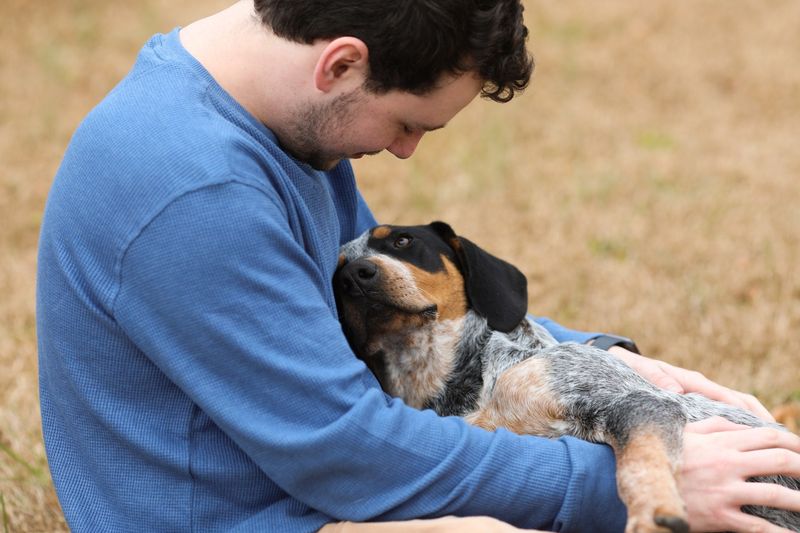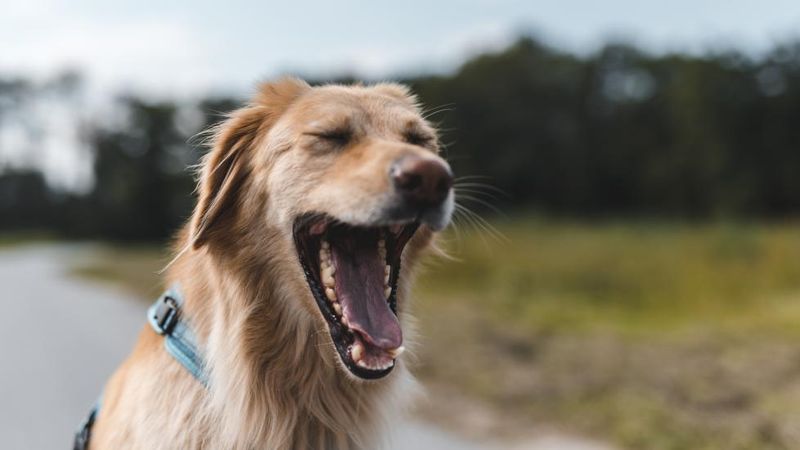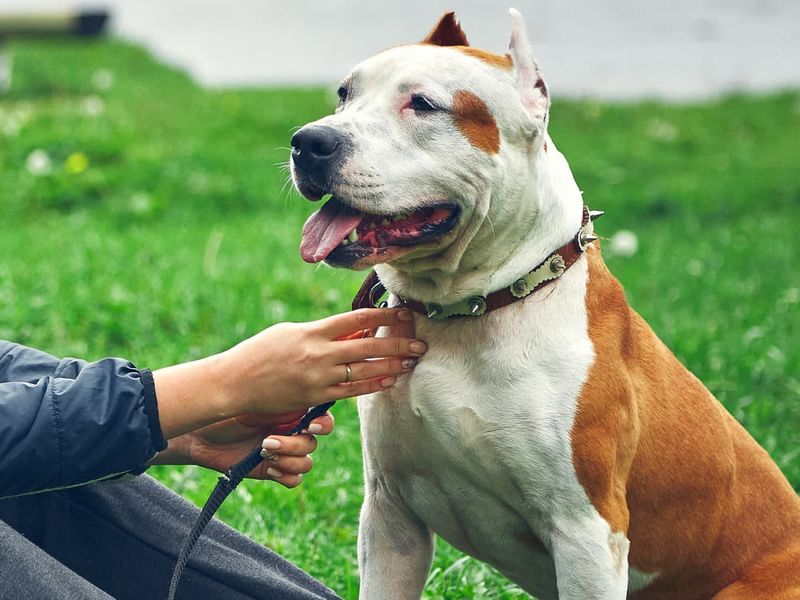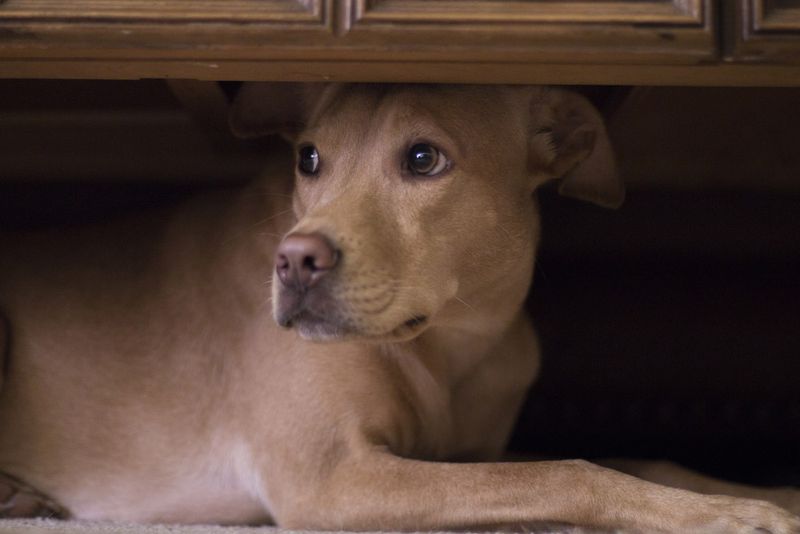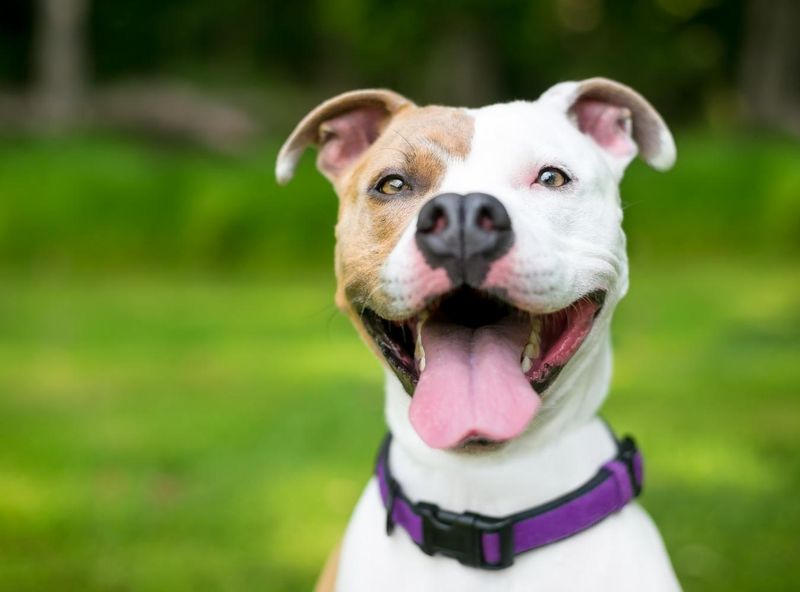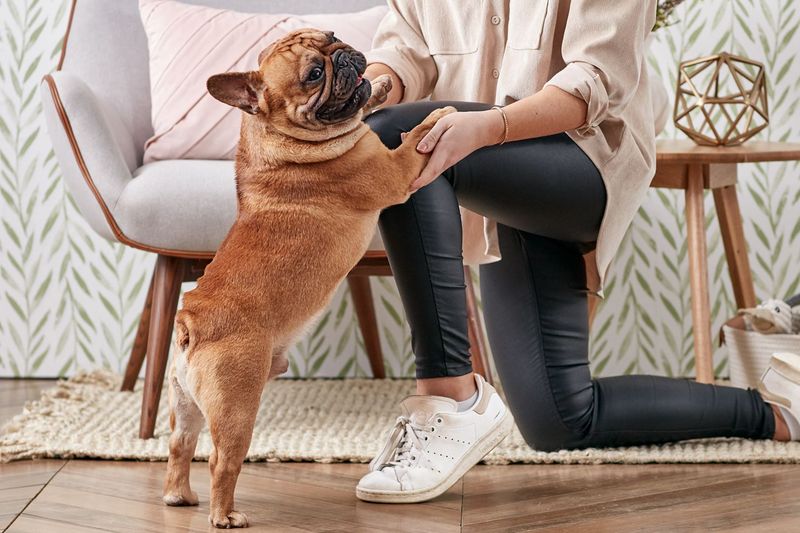Dogs are incredibly intuitive creatures, often communicating their needs through subtle signs. Understanding these signals can strengthen the bond you share with your furry friend. Here are 15 subtle signs your dog may be trying to tell you they need more from you.
Pawing at You
When your dog gently paws at you, it’s their way of saying they want more attention. This simple gesture can be a reminder that your furry friend needs some love and interaction. If you notice this behavior, take a moment to pause whatever you’re doing and give them a belly rub or a scratch behind the ears. This small act can make a world of difference to your pet. Incorporating regular playtime into your routine can also help curb this behavior, ensuring your dog feels loved and cherished.
Excessive Licking
If your dog is constantly licking you, it may be a sign they are seeking comfort or affection. Licking is a natural behavior that dogs use to show love and bond with their humans. This action might also indicate stress or anxiety, so it’s essential to notice when and how often it occurs. Providing your dog with a calming environment and spending quality time together can reduce excessive licking. If it becomes too frequent, consulting with a veterinarian may be beneficial.
Chewing Furniture
A dog chewing on furniture can signify boredom or anxiety. This behavior often indicates that your pup needs more mental stimulation or physical exercise. Interactive toys or puzzle feeders can provide the mental challenge they crave, while regular walks can release pent-up energy. Remember, patience and training are key. Offer appropriate chew toys to redirect their focus and protect your household items from their curious jaws.
Whining or Whimpering
Dogs whine or whimper to communicate discomfort, anxiety, or a need for attention. If your dog often vocalizes in this way, it might be time to explore what they’re trying to convey. Consider their environment: are they in pain, hungry, or in need of companionship? Addressing the underlying cause can help soothe their distress and strengthen your connection.
Digging persistently
Digging is a natural instinct for dogs, but persistent digging can signal boredom or stress. It might also indicate your dog is trying to escape or find something hidden underground. Providing a designated digging area or more outdoor playtime can help satisfy their instincts. Training and mental challenges, like scent trails, can redirect their energy into more acceptable activities.
Ignoring Commands
When a dog ignores commands, it may not be out of defiance but rather a plea for more engaging training or attention. Dogs thrive on structure and mental challenges. Consider spicing up their training sessions with new tricks or games. This can rekindle their interest and strengthen your bond. Remember, patience and consistency are essential when dealing with this behavior.
Barking Excessively
Excessive barking is often a dog’s way of expressing boredom or anxiety. It can also be a response to external stimuli like visitors or other animals. Understanding the triggers and providing a calm environment can help reduce this behavior. Interactive toys and more bonding time may also address the underlying need for attention or activity.
Following You Everywhere
A dog following you wherever you go is a sign of attachment and possibly a need for reassurance. This behavior shows your dog values your company and wants to be close. Ensure your pet feels secure by providing affectionate moments throughout the day. If this behavior seems excessive, consider gradually encouraging independence by teaching them to stay calmly in a designated area.
Yawning Frequently
Dogs yawn frequently not just from tiredness, but also as a response to stress or confusion. If Fido seems to be yawning a lot during certain situations, it might mean they need comfort or a change in routine. Creating a relaxing environment and sticking to a consistent schedule can help alleviate this stress. Pay attention to their cues and respond with gentle reassurance.
Being Overly Protective
An overly protective dog might feel insecure or anxious about their surroundings. This behavior often manifests when they sense a threat to their loved ones. Socialization and training can help your dog feel more confident and less reactive. Exposing them to various environments gradually can also ease their protective instincts. Patience and positive reinforcement are key to managing this behavior effectively.
Sleeping More than Usual
If your dog is sleeping more than usual, it might indicate they’re not getting enough stimulation or are feeling unwell. Evaluate their diet, exercise routine, and mental engagement. Sometimes, boredom can mimic symptoms of lethargy. Regular play and interaction can boost their energy levels. However, if excessive sleep persists, consulting a vet is advisable to rule out health issues.
Loss of Appetite
A sudden loss of appetite can be a sign your dog is stressed, anxious, or even unwell. Investigate any recent changes in their environment or routine that might be affecting their mood. Offering a variety of nutritious foods and maintaining regular meal times can reignite their interest in eating. Persistent issues should be addressed by a veterinarian to ensure there are no underlying health concerns.
Hiding Away
If your dog is hiding away more than usual, it might be a signal of stress or fear. This behavior can occur after a sudden change or a frightening experience. Creating a safe and comforting space where they feel secure is important. Engage them in gentle play to encourage them out of hiding. Understanding their triggers can help alleviate their anxiety.
Panting Excessively
While panting is normal for cooling down, excessive panting can indicate stress, anxiety, or a health issue. Observe when the panting occurs to determine possible causes, such as heat or excitement. Ensure your dog has access to fresh water and a cool environment. If panting persists without obvious reasons, a vet check is wise to rule out health problems.
Jumping Up Too Much
Though it may seem cute, a dog jumping up can indicate a need for attention or excitement. Training them to greet people calmly can help manage this behavior. Consistency and positive reinforcement are key in teaching your dog to sit or stay when meeting someone new. Providing ample opportunities for play and interaction can fulfill their desire for attention in appropriate ways.

